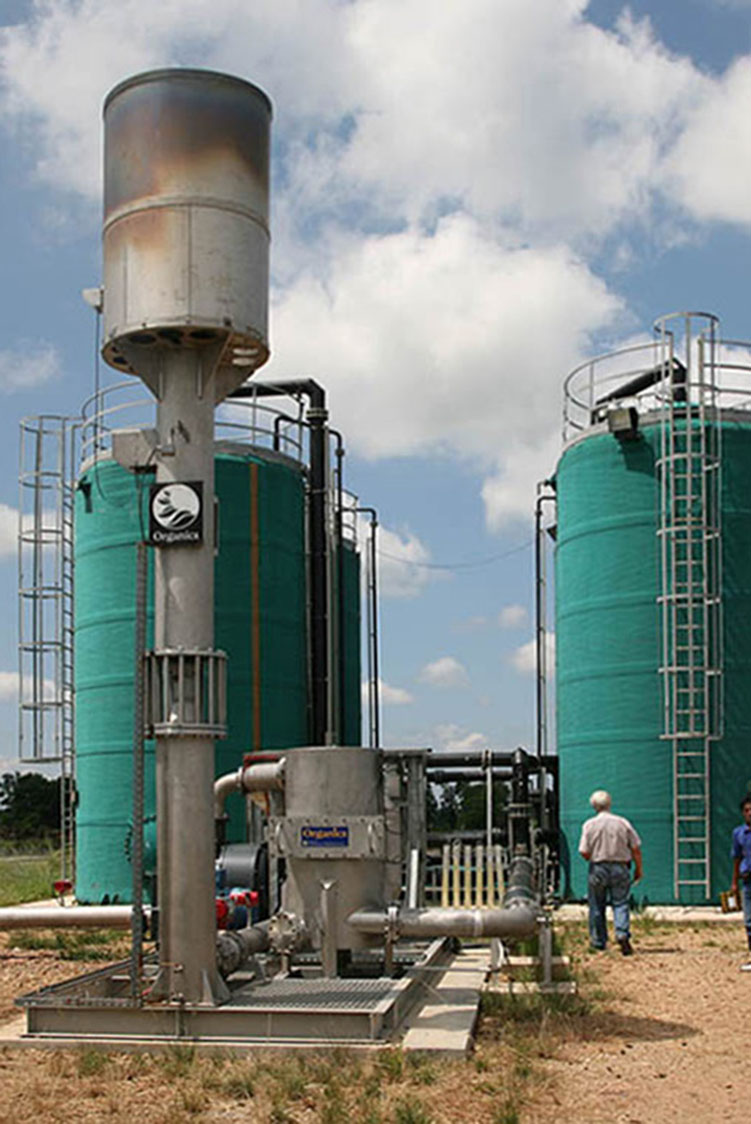Biogas
Renewable energy fuelling the futureRenewable Energy
Flares and Pump Sets
Ammonia Recovery
Hydrogen Sulphide Removal
Anaerobic Digestion
Electricity Generation Using Biogas
It is now globally agreed that renewable energy is one of the major mechanisms by which base-load energy requirements of the future will be met. Collective efforts must be employed to ensure that the circular economy is fully implemented and precious resources are conserved in the form of renewable energy.
Organics Energy’s success in renewable energy project development is the result of commercial experience, technical expertise, detailed local knowledge and a comprehensive network of partners.
Organics Energy’s success in renewable energy project development is the result of commercial experience, technical expertise, detailed local knowledge and a comprehensive network of partners.
Send download link to:
Flares and Pump Sets
The Organics Range of flare stacks provides control over the combustion process in both elevated and enclosed flame burners. Air is mixed with the combustion gases after exiting the burner port to ensure a clean burn, especially when the flow rate is reduced or the quality of the methane is below the optimum value for clean combustion.
The enclosed range of flare stacks controls heat loss to the environment and holds the gases at the design temperature for a specified period, referred to as the 'retention time'. Critical to a successful application of this approach to meet emission standards is control of the combustion air. This must provide homogenous conditions in the shroud, and is achieved by means of efficient mixing of fuel gas and combustion air within the combustion chamber.
The enclosed range of flare stacks controls heat loss to the environment and holds the gases at the design temperature for a specified period, referred to as the 'retention time'. Critical to a successful application of this approach to meet emission standards is control of the combustion air. This must provide homogenous conditions in the shroud, and is achieved by means of efficient mixing of fuel gas and combustion air within the combustion chamber.
Send download link to:
Ammonia Recovery
Thermally-driven ammonia recovery was developed by Organics to offer an alternative route to that of pH adjustment for continuous-process ammonia recovery.
With a thermally-driven stripper no chemical additions are required, apart from the minor addition of anti-foam agent. The single important input is waste-heat with which to drive the chemical reactions.
If waste-heat is not available, the fuel-cost can be as prohibitive as that of chemical additions or carbon source requirements. Where waste-heat is available, from an engine-exhaust or unwanted biogas, the long-term operating cost can be confined to plant operation and maintenance, including electricity costs.
With a thermally-driven stripper no chemical additions are required, apart from the minor addition of anti-foam agent. The single important input is waste-heat with which to drive the chemical reactions.
If waste-heat is not available, the fuel-cost can be as prohibitive as that of chemical additions or carbon source requirements. Where waste-heat is available, from an engine-exhaust or unwanted biogas, the long-term operating cost can be confined to plant operation and maintenance, including electricity costs.
Send download link to:
Hydrogen Sulphide Removal
Hydrogen sulphide (H2S) occurs naturally and is found during drilling for natural gas and crude oil, but it can be produced also by human activity. The presence of low levels of H2S can be detected by the smell which has been likened to rotten eggs. H2S gas is colourless and flammable and can be both poisonous and corrosive. In certain situations, H2S can be detected by smell in concentrations as low as 0.6 parts per billion (ppb).
Organics provides a number of solutions for the removal of H2S from biogas. Solutions depend on a number of parameters and are considered once a comprehensive site assessment has been applied; this to ensure the optimum solution for individual projects.
Organics provides a number of solutions for the removal of H2S from biogas. Solutions depend on a number of parameters and are considered once a comprehensive site assessment has been applied; this to ensure the optimum solution for individual projects.
Send download link to:
Anaerobic Digestion
Biogas is a by-product of the anaerobic decomposition of biodegradable waste, either in a landfill site or an engineered anaerobic digestor. In its original state, biogas typically contains 50 - 60% methane (CH4) with a relatively high energy content of 36 megajoules (MJ) per cubic meter of CH4.
Methane is also a potent greenhouse gas with 25 times the global warming potential of carbon dioxide (CO2). An estimated 8 percent of global methane emissions released into the atmosphere comes from landfills alone. If biogas is captured and used for energy production, not only are these emissions reduced but a non-conventional source of energy displaces traditional fossil fuel use.
Organics has designed, constructed and delivered hundreds of biogas control and utilisation projects around the world. Download our datasheet to find out more about our services.
Methane is also a potent greenhouse gas with 25 times the global warming potential of carbon dioxide (CO2). An estimated 8 percent of global methane emissions released into the atmosphere comes from landfills alone. If biogas is captured and used for energy production, not only are these emissions reduced but a non-conventional source of energy displaces traditional fossil fuel use.
Organics has designed, constructed and delivered hundreds of biogas control and utilisation projects around the world. Download our datasheet to find out more about our services.
Send download link to:
CONTACT US
ORGANICS GROUP
We are continually seeking to improve our site. If you notice anything that is not quite right, please contact us
Organics Privacy Policy
Data Privacy and Protection Policy






